Prince's Sign O' The Times: An oral history
 The Prince Estate / Jeff Katz
The Prince Estate / Jeff KatzOn 29 March, 1987, Prince swept the board at the Razzies.
His second feature film, Under The Cherry Moon, was named worst picture, while he scooped worst actor and the track Love Or Money took home worst song.
But Prince had already moved on. A day after the Razzies ceremony, he released the album of his career: Sign O' The Times - a record that finally united all the strands of Prince's phenomenal talent.
Over two discs, he goes from apocalyptic newscaster (Sign O' The Times); to whimsical storyteller (Starfish And Coffee); androgynous sex beast (Hot Thing); prayerful Christian (The Cross); funk band-leader (It's Gonna Be A Beautiful Night) and pop craftsman (U Got The Look) - all without breaking a sweat.
Behind that dizzying scope lay a disorganised, almost chaotic, recording process. Prince was creatively on fire, sometimes completing two or three songs in a day. At the same time, he got engaged to and separated from his creative muse, Susannah Melvoin; and fired his beloved backing band, The Revolution.
The turmoil resulted in a huge outpouring of creativity. Seldom can so much work have been recorded, shelved, recycled or thrown away as in the period 1985 to 1987.
In the end, Sign O' The Times was a Frankenstein's monster, stitched together from the remains of three completed, but discarded albums: Dream Factory, Camille and the triple-disc Crystal Ball set.
Now, 33 years on, Prince's estate is releasing an expanded version of Sign O' The Times which includes 45 unreleased tracks from the recording sessions.
To get a better understanding of how it came together, here's a history of the record and its subsequent tour, featuring new and archive interviews from the musicians who were there, and some of Prince's most famous fans.
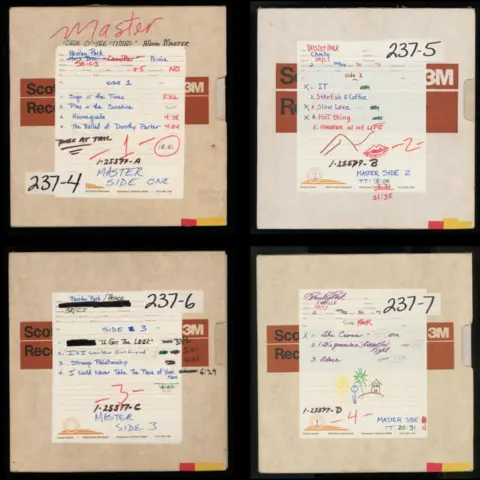 The Prince Estate
The Prince Estate
'The songs came out like a sneeze'
Prince [1986 radio interview]: "I work a lot. I'm trying to get a lot of things done very quickly so that I can stop working for a while. Everyone's afraid I'm gonna die."
Susannah Melvoin [Singer, co-writer, Prince's former fiancée]: "His work ethic was crazy. If you couldn't keep up, you were out."
Eric Leeds [Prince's saxophonist, 1985-2003]: "He was just in the studio almost every day, you really had no sense of where any of this music was going to go."
Susan Rogers [Prince's recording engineer, 1983-1987]: "The songs came out like a sneeze, one track after the next, after the next."
Prince: "I hear things in my sleep. I walk around and go to the bathroom and try to brush my teeth and all of the sudden the toothbrush starts vibrating. That's a groove, you know? You gotta go with that, and that means drop the toothbrush and get down to the studio or get to a bass guitar, quick! My best things have come out like that."
Susannah Melvoin: "He'd call you up at three o'clock in the morning and he'd say, 'I'm cutting, what are you doing?' And then he'd hang up, and you knew you had to be at the studio. It was time to work. There were no conversations. You were on his time schedule."
Susan Rogers: "He was so unique in terms of his cognitive profile. As a PhD [in Psychology] I've done some research into the neurobiology of creativity and that has made me more aware of just how unique Prince was. To use his own lyrics, 'Those kind of cars don't pass you every day.'"
Duane Tudahl [Senior researcher for the Prince Estate archives]: "I think he was at a point where he thought, 'I want to wow them with a three CD set,' especially after the failure of Under The Cherry Moon. What better to come back and say, 'OK, that didn't work. Watch this.'"

Welcome to the Dream Factory
Recorded in 1985 and 1986, Dream Factory was a collaborative songwriting project with The Revolution's Lisa Coleman and Wendy Melvoin (Susannah's sister). Light and playful, it contained early versions of songs like Strange Relationship and Starfish And Coffee.
Wendy Melvoin [Guitarist, The Revolution]: "It was such a beautiful time of exploration."
Lisa Coleman [Keyboards, The Revolution]: "Sometimes the work was just work. But this? It was like kindergarten for songwriters. As musicians, as songwriters, we were a little bit nuts."
Matt Fink [Prince's keyboard player 1978 - 1990]: "I love all that Dream Factory material that he did with Wendy and Lisa. Songs like In A Dark Room With No Light, or All My Dreams. I loved the the throwback to the 1930s movie soundtrack vibe. It was like when Paul McCartney would write songs like Lady Madonna. An interesting departure for him."
 Susannah Melvoin / Facebook
Susannah Melvoin / Facebook
Susannah Melvoin [writing on Facebook, 2017]: "Prince wanted me to come up with some ideas for the Dream Factory album artwork... which was originally The Flesh / Dream Factory. He chose my third attempt [which] has me opening the door to his dream world... or as it will be forever known 'The Dream Factory'."
Duane Tudahl: "Dream Factory would have been a great Prince and The Revolution album but he moved on from there."

The Revolution is over
On 17 October, 1986, Prince's publicist issued a press release announcing the dissolution of The Revolution. It began with a quote from one of Prince's all-time idols, Joni Mitchell.
Joni Mitchell: "He's driven like an artist. His motivations are growth and experimentation as opposed to formula and hits."
Susan Rogers: "Wendy and Lisa mattered so greatly to Prince - but they were really eager to stretch out and express what they could do musically, aside from Prince, so those tensions were there. And those tensions were exacerbated when Prince and Susannah became engaged, because it seemed to be tying Wendy with an even stronger chain to Prince, whether she was going to remain in his band or not."
Duane Tudahl: "Wendy and Lisa weren't fighting Prince - they were fighting to stay with him. I don't think they had intentions of leaving. But I think once he realised that they could leave, he got protective and said, 'I'm not going to allow you to hurt me, I'll hurt you first.'"
Matt Fink: "I tried to dissuade him [but] he didn't want to listen to me. I stayed friends with all of them, obviously, but it was a difficult time."
Robyn Riggs [Prince's publicist, speaking to the Associated Press in 1986]: "It was mutual as far as I understand it. He's coming up with something different. Nothing's definite at this point."
 Warner Music
Warner Music
It subsequently transpired that tensions had arisen when the band asked for a raise.
Duane Tudahl: "You want to lose a friend, ask for money... The unfortunate thing is they deserved it [because] what they were bringing to Prince was almost incalculable. They were making 800 bucks a week. That's no money."
Prince [singing on Rebirth Of The Flesh, recorded days after firing his band]: "It isn't about the money, we just wanna play."
Wendy Melvoin: "Once we were gone, he turned into a different person. And that's the nature of who he was. He became someone else in every phase - and the previous phase would disappear."

Forever in my life?
 Getty Images
Getty ImagesIn November 1985, Prince moved into a yellow, three-storey mansion in Galpin Boulevard, Minnesota, with Susannah Melvoin. She had designed the house and its dedicated recording studio while he was in France shooting Under The Cherry Moon.
Susannah Melvoin: "Wendy and Lisa and I lived together and we would have [Prince] stay at our place. We became really close. He got to be in a family of three women, and we got to have our Prince. Not many people had that kind of relationship with him."
Prince [speaking to MTV in 1985]: "One thing I'd like to say is that I don't live in a prison. I haven't built any walls around myself, and I am just like anyone else. I need love and water. I don't really consider myself a superstar. I live in a small town, and I always will. I can walk around and be me."
Susan Rogers: "In the studio there was this rich, deep royal purple carpet, and on the back wall of the control room Susannah Melvoin had designed these stained glass windows. When the setting sun would come in at the end of the day, we'd have these beautiful prisms on the floors. It was really gorgeous."
At this point, Prince and Susannah were engaged, and several of the songs on Sign O' The Times discuss their relationship. Among them is the love-struck devotional Forever In My Life, which Prince recorded twice in August 1986.
Duane Tudahl: "The first take sounds like a heartfelt demo that a guy's playing on acoustic guitar. Just strumming it for his love."
Susan Rogers: "The very first version is a young man, expressing the kind of sentiment he might on his wedding day. He sounds happy and optimistic. The version that ended up on the album is more serious. This is a tone that says, 'Yeah, I think I'm going to do this and it'll be hard.' It's a more mature perspective."
Allow Google YouTube content?
Robyn [pop star / fan]: "I don't know if you know the story about how the background vocals happened the way they did? He recorded all these vocals and something went wrong - so when you listen, the background vocals sing the lyrics before the lead vocal does. That was a mistake [but] he ended up keeping it because he really liked it. The unexpectedness of those backing vocals makes it a little bit like it's coming from a subconscious place."
Another song about Susannah was If I Was Your Girlfriend. In the lyrics, Prince imagined being her platonic best friend - and gaining access to her most intimate secrets.
Susan Rogers: "Being Wendy's twin sister she's very close to Wendy. It was a way of asking, 'Why can't I have the closeness you have with your sister? Why can't we be friends, too?'"
Alicia Keys [pop star / fan]: "If I Was Your Girlfriend - come on, man, how are you going to write that? It is so exact - you can hear a guy thinking like that. 'Man, maybe I'll never be as close to her as her girlfriends are... So could I be your girlfriend?' It's deep man. He was so profound, so prolific."
Allow Google YouTube content?

Camille and Crystal Ball
In the aftermath of the split from The Revolution, Prince recorded an album under the name Camille - using distorted, speeded-up vocals that emphasised sexual ambiguity. The album was submitted to Warner Bros and 100 test copies were printed, before Prince changed his mind and incorporated the songs into the Crystal Ball triple set.
Susan Rogers: "That [the Camille voice] was done through the vari-speed dial on the analogue tape machine. He would slow the tape machine down while he was recording and sing in another key and another tempo. But when you put it back to its fixed speed, you've got this pitch-shifted timbre that would sound not-quite masculine and not-quite feminine. How he conceived of it was, you can't tell if Camille is alive or dead, you can't tell if Camille is male or female."
Duane Tudahl: "Camille was an eight song album. When it expanded to Crystal Ball, he was still referring to it as Camille on some of the paperwork. It was a very nebulous area."
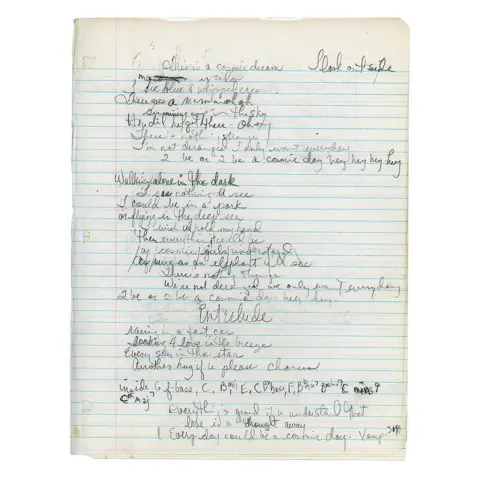 The Prince Estate
The Prince Estate
Susan Rogers: "He always recorded his vocals alone, so I'd leave the studio and wait on the other side of the door. [In Galpin Road] there was a rec room, and a billiard table and a couch - so I would hear those vocals coming through the door. And you could hear his foot. You'd hear the heel of his boot, stomping on that parquet floor - bam, bam, bam, bam. Then he'd finish with the vocal, come out of the room and go upstairs to take a break. And I'd go in and I'd play the tape... And I'd just be wiped out. I never lost my gratitude for how great that felt - to be the only one in the room and push play on that tape and be the first listener, hearing that for the first time."
Crystal Ball was submitted to Warner Bros in late 1986, but the company blanched at the sheer volume of material and told Prince to trim it down.
Eric Leeds: "I remember one time, one of the higher ups at Warner Bros actually came to the studio in order to advise Prince on what songs he should cut. Prince just laughed. He said, 'Imagine - this guy's gonna come in and tell me how I'm supposed to edit this? I don't think so.'"
Duane Tudahl: "It was painful to him. He said that his songs are his children, so all of a sudden somebody was saying, 'Take out seven of your children.' I can't imagine that with something he was happy with."

U Got The Look
Instead of simply cutting Crystal Ball down to a double-disc set, Prince reconfigured the entire album around Sign O' The Times - a song he'd recorded in 1986 after surviving a terrifying earthquake in Los Angeles. He also added the sure-fire radio hit U Got The Look, a duet with Sheena Easton.
Allow Google YouTube content?
Prince [posting on his website in 1994]: "A friend used 2 jump up and dance whenever Robert Palmer's Addicted to Love came on. As a test this song was recorded to find out of [sic] the friend would dance 2 a similar groove or just chill because it wasn't a hit. Sure enough, the friend didn't like the song until it was in the Top 10."
Sheena Easton [speaking to the Windy City Times in 2012]: "U Got The Look was a track he'd basically finished for himself. It was just a Prince track. He said, 'Do you want to just come in and sing some backup vocals on the choruses?' So I went into the studio, and because I didn't know I was singing against him, I was all over the place - and he said he kind of liked that, so he expanded it into a duet."
Susan Rogers: "I was remarking to myself, 'This is weird, we've spent three days on this song.' That was uncharacteristic of him."
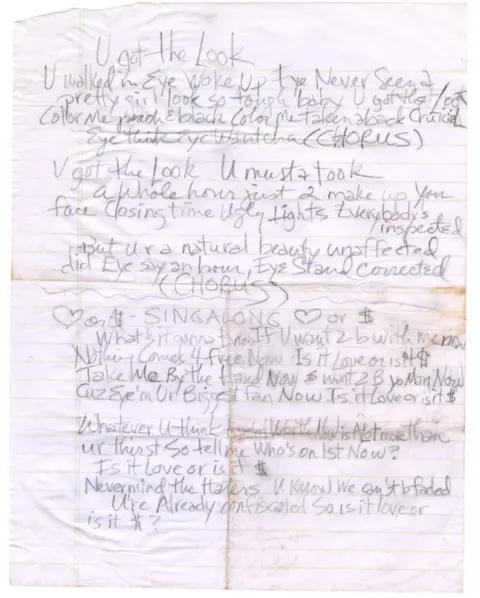 The Prince Estate
The Prince Estate
Duane Tudahl: "Sign O' The Times was doing sort of a Marvin Gaye, What's Going On type thing, where he was looking at society. That was something he'd done before, but there was something more mature about it. I think he wanted to show, 'Look, I have what it takes.'"

'Really dumb stuff'
Sign O' The Times has become known as Prince's best album - but while fans devoured it, some critics were unconvinced.
Matt Fink: "I thought, 'Oh my god he's moved to another realm. This is a different place, musically, from before.'"
Robyn: "It's a lot of things at the same time. It's funny and sad and raunchy and cool."
Spin Magazine review, 1987: "I guess you know what the problem with Prince is: He's too good. Because he's so good he can do anything he wants, and sometimes he wants to do some really dumb stuff. And sometimes the dumb stuff he does works out to be the best stuff anybody's ever done. Ever."
Rolling Stone magazine review, 1987: "There would be one great LP hidden in the sprawl of this double album if the songs exerted any uniform effect. Unfortunately, they don't. That's okay; one takes great songs wherever one can find them. But simple virtuosity - mere brilliance, one might almost say - seems too easy an exercise, at this point, for someone of Prince's extraordinary gifts. And he is beginning to repeat himself."
Prince [Speaking to Rolling Stone magazine, 1990]: "What people were saying about Sign O' The Times was, 'There are some great songs on it, and there are some experiments on it.' I hate the word, 'experiment'. It sounds like something you didn't finish. Well, they have to understand that's the way to have a double record and make it interesting."

The ballad of The Ballad Of Dorothy Parker
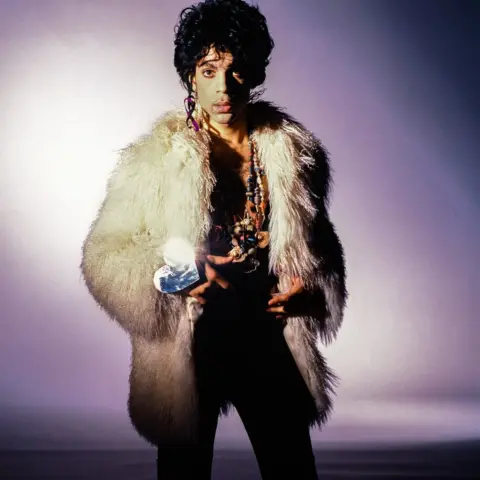 The Prince Estate / Jeff Katz
The Prince Estate / Jeff KatzAlmost everyone who contributed to this article picked The Ballad Of Dorothy Parker as their favourite song from Sign O' The Times. A trippy dream-sketch, it describes a flirtatious encounter with a waitress, with whom Prince takes a bath while "leaving my pants on, because I'm kind of going with someone".
Alicia Keys: "I love the irreverence of the writing. It's such a cool story."
Trevor Nelson [broadcaster / fan]: "It's a song that nine out of 10 producers wouldn't have let get made. They would have messed with it. They would have said, 'It doesn't make sense,' but it's got something very, very special about it."
Levi Seacer, Jr [Prince's bassist, Sign O' The Times tour]: "It's funky but it's sophisticated funk. That drum beat was real addictive, you know?"
Allow Google YouTube content?
The Ballad Of Dorothy Parker was the first song Prince recorded at his Galpin Road studio in 1986. Its unique sound is attributed to the fact that the mixing desk wasn't fully installed when inspiration struck.
Susan Rogers: "We were testing it out, making sure that everything was in place and Prince said: 'I've written a song, get out.'
"It was clear to me right from the get-go, 'Uh-oh, something's not quite right,' because the sound was almost like it was underwater - but he wouldn't stop recording. I'm thinking, 'He either doesn't hear this, or he doesn't care.' And I'm definitely hoping it's the latter, because I don't want to be killed over this.
"And we did the whole song with him not complaining, happy as can be - and we finally printed the mix and he said, 'I like this console, but it's kind of dull!' And I thought, 'Well, of course he heard it. But he didn't care.' That unusual sound, just through serendipity, served the underwater dream state that he was trying to describe."

Colour you peach and black... The cover shoot
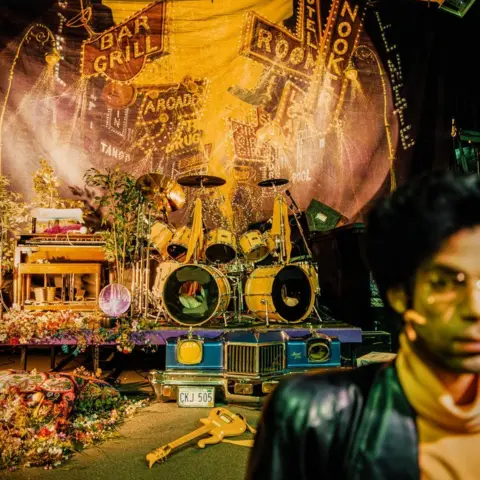 The Prince Estate / Jeff Katz
The Prince Estate / Jeff KatzSign O' The Times introduced Prince's new peach-and-black colour scheme (peach representing Susannah, and black representing Prince). The iconic cover was shot by Jeff Katz, at just 24 hours notice.
Jeff Katz: "I got a call from Prince at the beginning of 1987 and he said, 'Can you come to Minneapolis and take my picture?' By that time, I had photographed him so much that I realised he didn't really want to go over [concepts] or to belabour things, so you just pack everything you can, and you go. And that was actually my first trip to Minneapolis.
"We went to the warehouse facility where he rehearsed and basically it was completely empty except for the drums. He showed up wearing round glasses, with a braid in his hair - it was kind of a hippie rock retro look - and he just said to me, 'We got to fill this room up.' Then he walked away.
"So people were going to Paisley Park and they were going to his house and taking stuff from the rooms. It was almost like we were painting this blank canvas - and once it was all done, I was like, 'This doesn't look complete. It's missing a background.'
"But it was a Sunday and in Minneapolis on Sunday, everything is closed. Then Karen Krattinger, who ran [Prince's] office, said, 'There's a dinner theatre very close to here [and] they usually have big backgrounds for their productions. So she went down there with a truck, and they come back with this giant backdrop the theatre was using for a performance of Guys and Dolls - and, boom, the set was complete.
"And if you've seen the tour, they took my album cover and they made it into that giant set!"

It's Gonna Be A Beautiful Night?
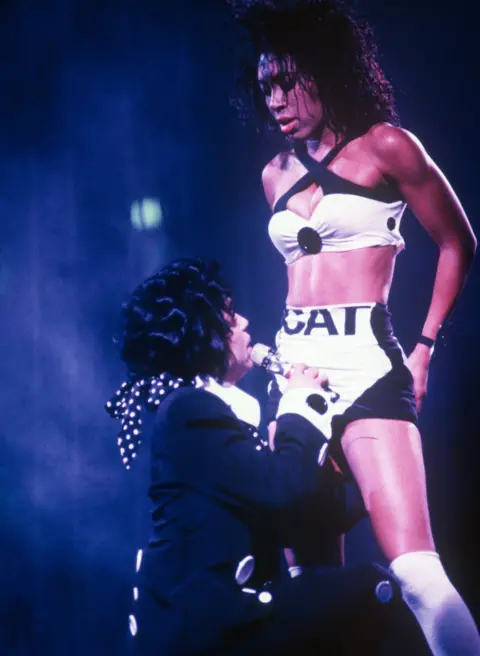 Getty Images
Getty Images
Prince's new band made their live debut with a warm-up show at First Avenue in his hometown, Minneapolis, before setting off to Europe for an extensive tour. They wrapped up on New Year's Eve at Prince's newly-built Paisley Park complex, where Miles Davis jumped on stage for a jam session.
Levi Seacer, Jr: "The First Avenue show was the first time anybody had seen the new band play those songs - and a lot of the local musicians were a little hurt. They didn't understand why he went to California to get some players when they'd been in Minneapolis, waiting for their turn. So when we played at First Avenue, it was kind of like, 'You guys better be good.'"
Eric Leeds: "Diehard Prince fans always ask me, 'Was The Revolution Prince's favourite band?' My answer to that is real simple: Prince's favourite band was the band that he had on any given day. He was not somebody given to introspection about the past."
Levi Seacer, Jr: "Every band he had led to the next one so, if it wasn't for The Revolution, we wouldn't even be there. But I would say that the Sign O' The Times band got into maybe a few more genres of music. We'd do some jazz and gospel. We'd mix some Latin in there because of Sheila [E, on drums]."
Eric Leeds: "Sheila was so overqualified for what Prince's music needed from somebody like her. I don't mean that as a criticism of Prince - it's just the nature of [pop] music. By the same token, I could play everything Prince ever needed me to play utilising about 25% of who I am as a musician."
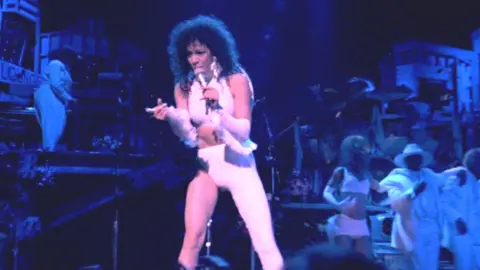 Warner Music
Warner MusicShelia E [speaking to BBC Radio 2 in 2013]: "Prince and I used to have a contest to see who had the best outfits, and whoever won would pay each other $1,000. When it came to Sign O' The Times and that one-legged outfit, I won that bet for sure. I had to hide that until I got on stage. He didn't see it until I got off the drums to go down and rap. He looked and said, 'What is that you have on?' And I turned and smiled and said, 'Ahhhh, I win!'"
Eric Leeds: "Prince had a set of cues and signals that he could throw up to the band at any point in time. He might throw a fist in the air - that meant we played a certain line. He might wave his hand in a particular way - and we had another lick we could play. Well, when Miles was playing with us, Prince threw up his hand to give us a cue and no one played the lick! Everybody in the band, we just had our eyes on Miles. Prince got rather aggravated. I remember him yelling, 'Hey, that might be Miles but y'all still in my band!'"

Until the end of time?
 Getty Images
Getty ImagesThe end of the 1980s saw Prince continuing to score hits with the Lovesexy and Batman albums, but he never recorded anything else that was held in such high esteem.
Trevor Nelson: "I think that was him at his peak. He absolutely nailed it. It's like when Michael Jackson did Thriller. Yeah, he had good moments after that, but Sign O' The Times was his peak."
Duane Tudahl: "What Prince does, is he creates his own genre. And I think that Sign O' The Times is a beautiful expression of how he expanded the definition of pop music."
Susan Rogers: "It was so hard, going from Dream Factory to Crystal Ball and finally coming up with this statement of art that represented him and what he was comfortable saying about himself. But it represented him in a transition period. He was going to get over this hump and move on to new things. My hunch would be, he did not recognise that this was a masterpiece."
Susannah Melvoin and Sheila E interviews courtesy of BBC Radio 2. Robyn spoke to Mary Anne Hobbs on BBC 6 Music.

Follow us on Facebook, or on Twitter @BBCNewsEnts. If you have a story suggestion email [email protected].
